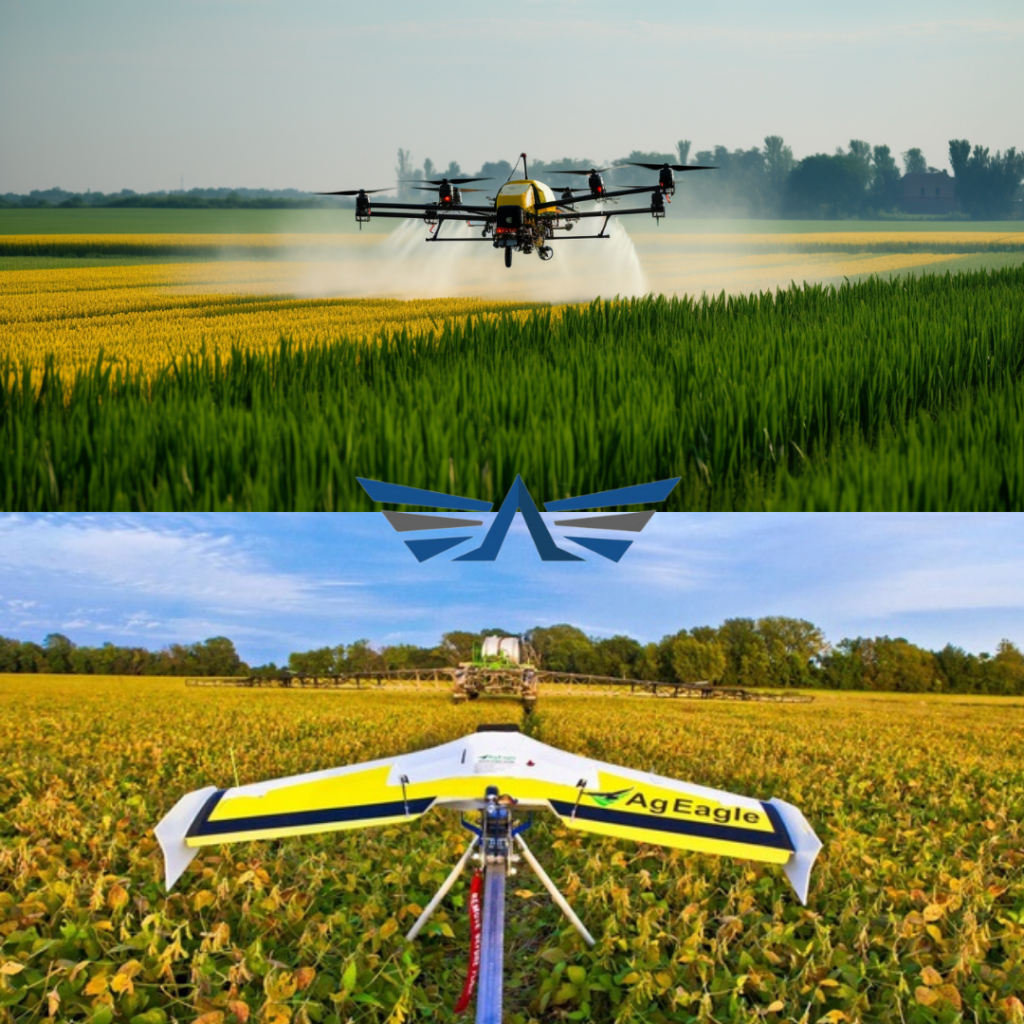With the development of technology, innovations continue to increase rapidly in every area where humans are involved. These new technologies, which make our lives easier and benefit us, are changing the habits of everyone from producers to consumers. The fact that innovations save people time and effort increases the usability of next-generation technologies in production. One of these innovations, drones, is an extraordinary breakthrough that is leaving a lasting impact, changing our lives and work plans. Drone technology has rapidly found its place in the agricultural sector in recent years. Its advantages, from efficiency to time savings, can be felt in every aspect. In this article, we will discuss the uses and benefits of agricultural drones, which are creating a revolution today and will continue to do so in the future.

Agricultural Drone Applications and Investments
Investments in agricultural drones have seen a rapid rise since 2014. Between 2013 and 2015, investments in agricultural drones increased by 344%. Despite being a new technology, drones have been widely adopted globally due to their benefits.
The primary function of agricultural drones in the current market is for pesticide management (chemical spraying) and integration with irrigation systems. Drones can assist agricultural operations by collecting and analyzing data, making pesticide use and water consumption more efficient. Drones, which contribute to every stage of the production process, play a role in the implementation and development of precision agriculture. (Precision Agriculture is a farming management system based on the use of modern technologies at every stage of the process.) This approach allows for the observation and measurement of crop and livestock activities using real-time data. It eliminates the need for guesswork in predicting crop outcomes, allowing for planned agricultural activities with lower costs and higher yields.

Types of Drones Used in Agricultural Operations
Agricultural drones serve two main purposes. The first is capturing aerial images and providing real-time data. The second is spraying operations for tasks like irrigation and pesticide application. Drones can share topographic data that helps farmers plan for the next season by measuring changes in land, temperature, and more.
These drones are classified into two general categories based on their models: rotary-wing (Multicopter) and fixed-wing UAVs. Rotary-wing drones are known to be the easiest to use and the most cost-effective. In addition, you can attach various equipment to them, offering more adaptability. They are also more user-friendly.

Advantages of Agricultural Drones in Farming Activities
Drones have the potential to increase the efficiency of chemical spraying, requiring fewer chemicals and reducing water consumption.
- They can inspect land and crops, providing instant feedback.
- Drones can detect pests and weeds, especially in large areas like orchards and cornfields, where access to difficult-to-reach areas is needed.
- They monitor crop health and notify the need for chemical treatment through software.
- Drones assist in digital mapping and data analysis.
- They monitor the health and safety of livestock on farms.
- Some technological opportunities for agricultural drones include infrared cameras, automatic flight patterns, specialized data processing, and GPS systems.
- Drones can test and monitor water stress.
- They can monitor farm workers.
- Drones help ensure the security of your buildings and equipment.
- Safer and More Cost-Effective than Traditional Sprayers
Spraying operations in agriculture are extremely important. Without a proper strategy, failing to spray crops effectively could result in significant losses. Agricultural drones assist producers by ensuring the correct and sufficient amount of chemical spraying.
Undoubtedly, agricultural drones will continue to be a part of our lives in the future. It is still too early to say anything definitive about their future and widespread impact. However, there are already significant advancements being made in drone-related software by companies. In this regard, we can confidently say that drones have once again proven their value in human activities. Who knows what innovation lies ahead?

